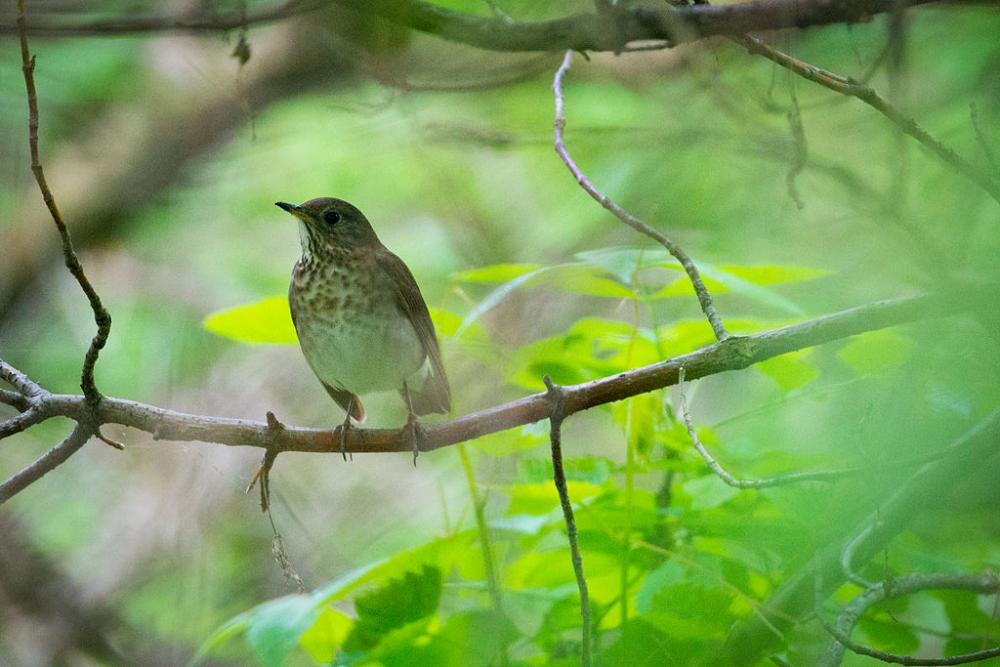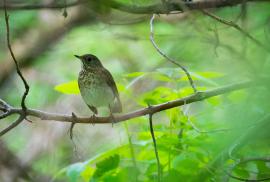Guide to Boreal Birds
Overview
A reticent bird, the Gray-cheeked Thrush keeps mostly under cover, searching for food on the ground. This thrush is one of the few American birds that have spread to northeastern Siberia in the scrub tundra but migrate back through North America to the American tropics.
More often heard than seen, the Gray-cheeked Thrush is one of North America's least-known birds. It inhabits coniferous forests (primarily spruce) and tall shrubby areas in taiga, but few ornithologists visit its remote breeding habitats, and fewer still have studied its natural history and ecology. Their diet of beetles, weevils, ants caterpillars, cicadas and other helps to control destructive insect pests. The Gray-cheeked Thrush's habit of eating berries contributes to the propagation of plants because undigested seeds are transported to new locations. In spring, birds begin to arrive in mid- to late May and most have begun fall migration by the start of September. Population trends and threats to this species are poorly known.
Description
6 1/2 -8" (17-20 cm). Dull olive-brown, with pale, spotted underparts and no rust color in plumage; sides of face tinged with gray; no eye ring. Swainson's Thrush similar, but has buff eye ring and buff, not gray, cheeks. Other spotted thrushes show rust color on upperparts or tail.
Voice
Series of thin reedy notes inflected downward at the end.
Nesting
3-5 pale blue-green eggs, finely speckled with brown, in a solidly built cup of grass reinforced with mud and placed in a low conifer.
Habitat
Nests in coniferous forests, especially in dense stands of stunted spruce and balsam; widespread on migration.
Range/Migration
Breeds from northern Alaska across northern Canada to Newfoundland, south to northern British Columbia, northern Ontario, and central Quebec. Throughout much of eastern North America on migration.



